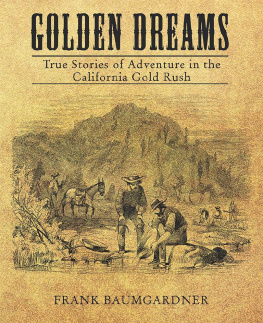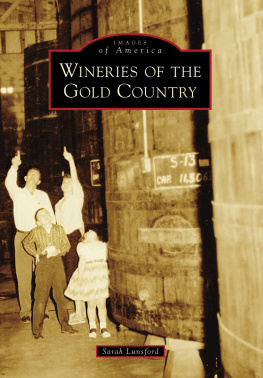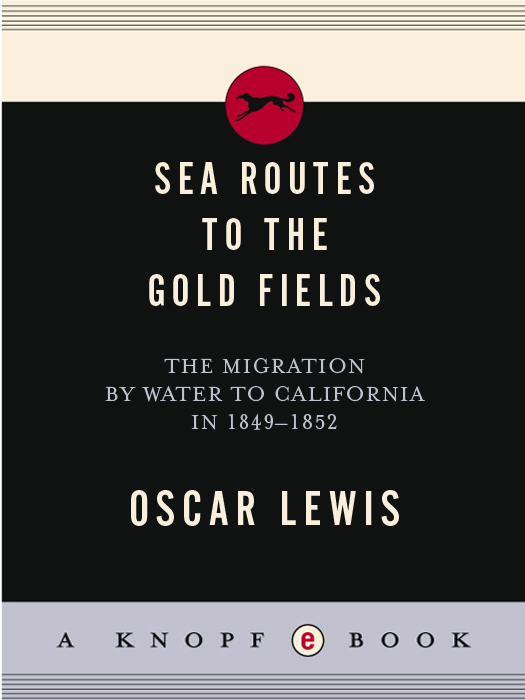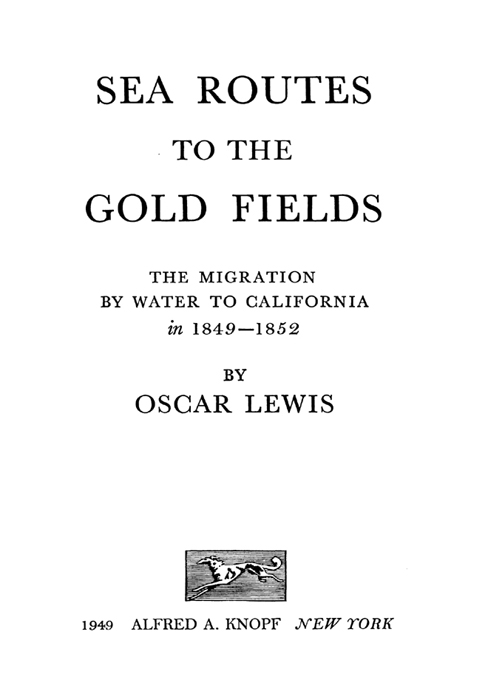ALSO BY OSCAR LEWIS

SILVER KINGS
The lives and times of Mackay, Fair, Flood, and OBrien, lords of the Nevada Comstock Lode.
THE BIG FOUR
The story of Huntington, Stanford, Hopkins, and Crocker, and of the building of the Central Pacific.
Novels:
I REMEMBER CHRISTINE
A novel about a celebrated San Francisco family and its founder, from the 1850s to the present.
THE UNCERTAIN JOURNEY
A dramatic study of a sensitive young mans infatuation for a girl who exerts a disruptive influence on his life.
By Oscar Lewis and Carroll D. Hall:
BONANZA INN
Americas First Luxury Hotel
A pageant of San Francisco life in the colorful era when the Palace Hotel was the crossroads of the world.

THESE ARE BORZOI BOOKS
published in New York by ALFRED A. KNOPF

Copyright 1949 by A LFRED A. K NOPF , I NC . All rights reserved. No part of this book may be reproduced in any form without permission in writing from the publisher, except by a reviewer who may quote brief passages or reproduce not more than three illustrations in a review to be printed in a magazine or newspaper. Published simultaneously in Canada by McClelland & Stewart Limited.
eISBN: 978-0-307-82818-7
v3.1
CONTENTS
INTRODUCTION
T HE tens of thousands who set off for California by water during the first years of the gold rush left behind an uncommonly detailed record of their journey, for theirs was one of the most articulate migrations in history. The Argonaut who failed to commit his impressions to paper was decidedly an exception. In his eagerness to be among the first to reach the diggings, he might set sail without many things necessary to his safety or comfort in the new land, but rarely was he without a notebook, a quillpen, and a bottle of ink. He provided himself with writing-materials because, to a man, he recognized that the enterprise on which he had embarked was likely to prove the most momentous happening of his life, and it was natural that he should want to preserve in black and white a record of his great adventure.
To be sure, those who made the journey by land were no less eager to put on paper a day-by-day chronicle of happenings along the way, but comparatively few were able to carry out that resolve. The westward trek over prairie and desert and mountain was a physical ordeal so grueling that not many had time or energy to keep detailed records. On the other hand, those who traveled by sea found in their journals a welcome relief from the tedium of idle weeks aboard ship. The consequence is that while overland diaries are comparatively rare, there exist today hundreds of diaries, journals, and collections of letters, all setting forth in detail every phase of life at sea on the months-long voyages from the ports of embarkation to San Francisco.
In the nature of things much of this material is of little interest to present-day readers. To the average 49er, wielding a pen was as unfamiliar a task as building a wing dam or operating a sluice box, and when he opened the virgin pages of his diary and set about describing the impact of a life completely new, he seldom accomplished more than a barren record of the length of each days run, the state of the weather, and a catalogue of meals served, ships sighted, and fishes caught. The result is that one finds a marked similarity in these narratives. Except for the names of the ships on which they sailed, the routes followed, and the stops along the way, scores of such documents are all but indistinguishable from one another.
There were some fortunate exceptions to this rule, however. Every now and then one comes across the diary of some long-forgotten traveler who possessedall unconsciously, one must believethe gift of bringing to life the feel and flavor of these long coast-to-coast passages a century ago. This quality of vividly evoking the past is as difficult to define as it is rare. It bears no discoverable relation to the Argonauts familiarity with the process of putting words on paper; the most facile diarists are often the most arid. It is not a matter of education; some of the most informative narratives were written by men not many degrees above illiteracy, and the explanation seems to be that for such as these the task of writing at all was too laborious to permit recording commonplace happenings. More than anything else, perhaps, the secret lay in the fact that when certain California-bound emigrants sat down to struggle with their diaries, they brought to bear a native shrewdness of observation, a selective sense that discarded the familiar and obvious and focused unerringly on what seemed to them worthy of note because it lay beyond their former experiences.
Thus the Maine farmer who in April 1849 found himself on an island off the coast of Brazil had nothing to write about his relief at regaining land after seven weeks at sea, and little about his first contacts with an alien civilization. These could be taken for granted. But he described in detail an exotic tropical fruit he had never seen before: we found benaners growing wild in the clearing & et our fill you eat only the core first peling of the skin which is bittr & contains little nurisshment. Again, at sea off the Horn, while more fluent diarists filled pages with descriptions of rough seas and strong winds (which was no news to anyone), another, instinctively aware of the dramatic value of suggestion, wrote: About nine last night the Captain went to the galley and leaned over the stove to thaw the ice out of his whiskers. Scores complained of a lack of privacy in the overcrowded ships; few expressed this all but universal feeling so convincingly as the man who wrote: One of the first things I plan to do when I get home is to take my gun and a sack of provisions and go up and camp out on the west side of Baldy. Ill stay there a month and maybe longer and if I dont see a single human being I wont be disappointed.
This book attempts to picture for present-day readers what life was like aboard the sailing ships and steamers that plied between the two coasts a century ago; to tell something of how the emigrants passed the time in their cramped and crowded quarters below decks, of what devices they used to combat the tedium of idle months at sea, of how they withstood the discomfort of extreme heat in ships badly designed for a passage of the tropics, and with what spirit they endured the privations of the bleak, weeks-long rounding of Cape Horn. It attempts, too, to tell something of the Argonauts themselves, of how, suddenly drawn from plow or shop or office stool and embarked on a hazardous adventure in a remote land, they reacted one upon another during the long voyages, of how they adjusted themselves to the excessively crowded conditions in the ships, and of their contacts with strange peoples and customs at the intermediate stops along the way.
One who hopes to throw light on this complex subject must of necessity rely mainly on the testimony of those who recorded their impressions at first hand. Extended use has therefore been made of the contemporary narratives of 49ers who made the westward journey by sea. This material exists in abundance: in diaries and journals and letters, some in print but most in manuscript, some easily accessible in research libraries or on the shelves of private collectors, much of it still in the hands of descendants of the pioneers.











